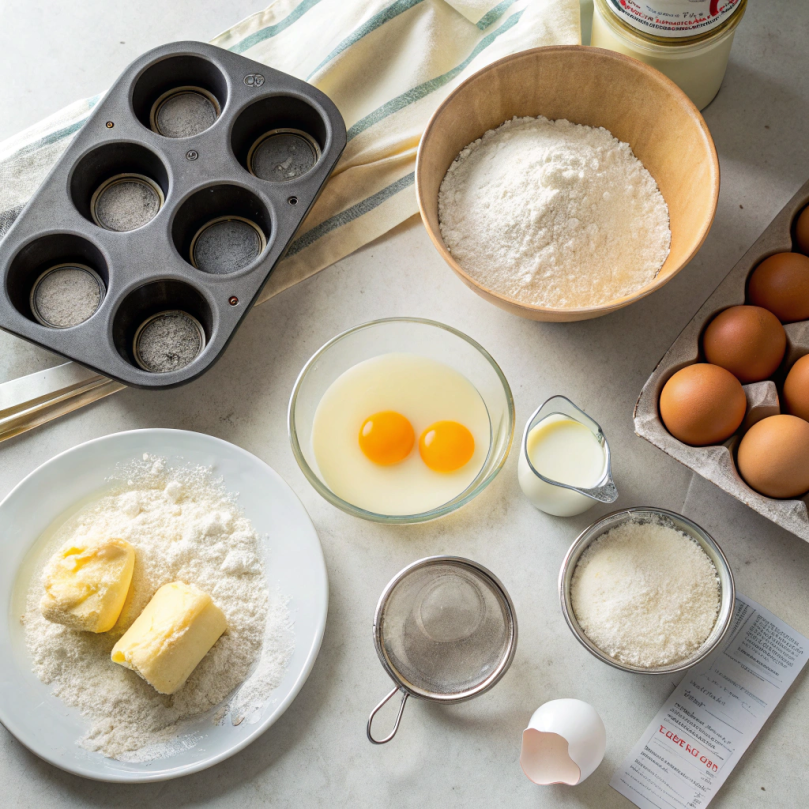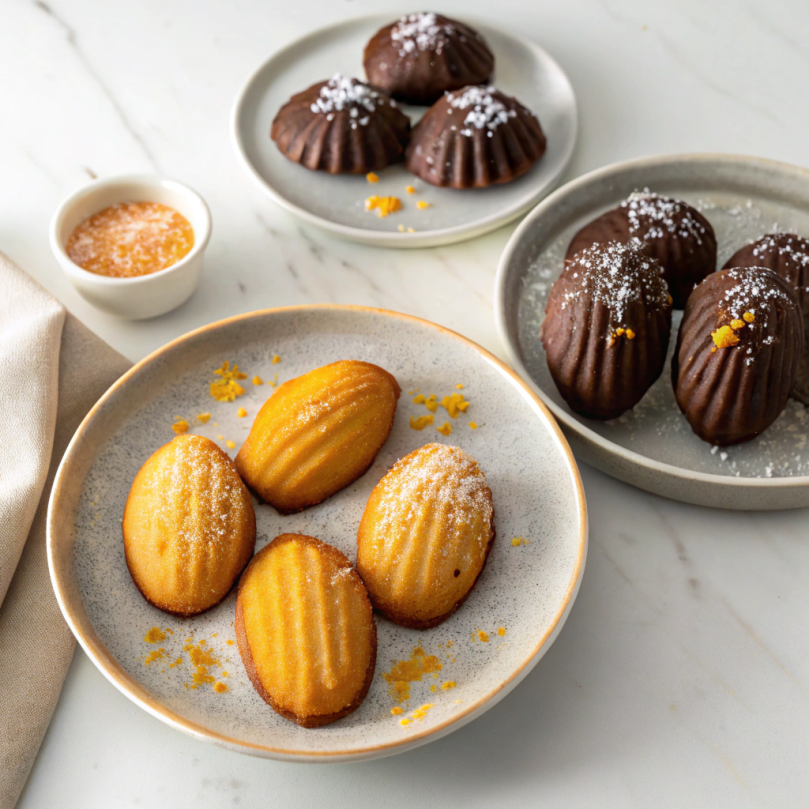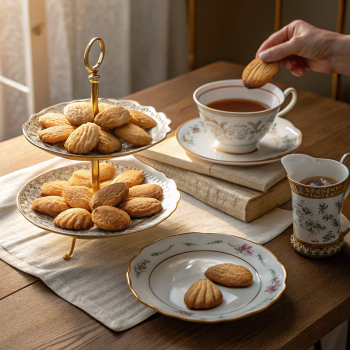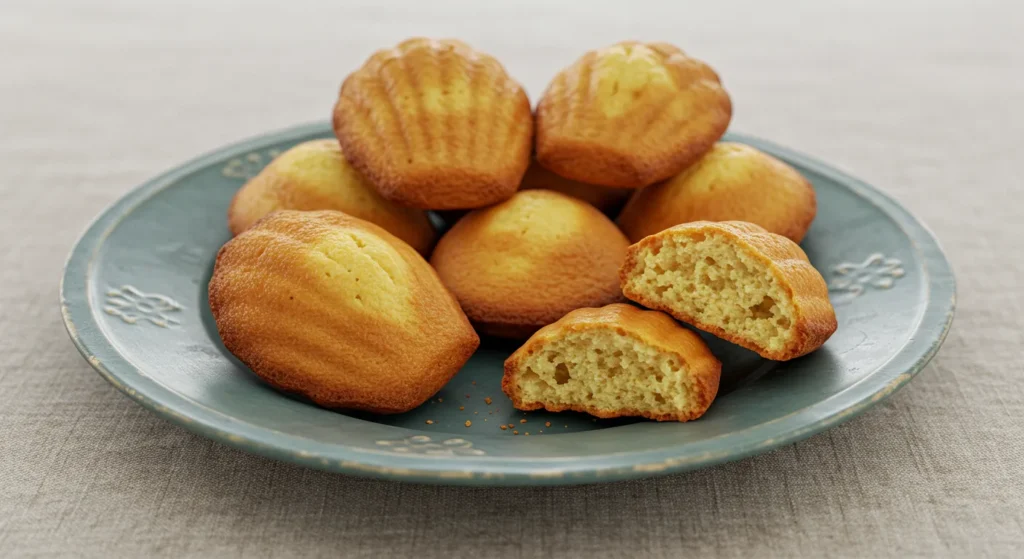Madeline Cookies Recipe Using Cream – Why This Recipe?
As Chef Greeny, I’ve spent years perfecting various pastry techniques, but there’s something truly special about madeline cookies made with cream that keeps me coming back to this recipe. My first encounter with these delicate, shell-shaped treats was during my culinary studies in France, where I was captivated by their simple elegance and complex flavor profile.
What makes this madeline cookies recipe using cream stand out is the incredible texture it creates – slightly crisp on the outside with a pillowy, tender interior that practically melts in your mouth. Traditional madeline recipes often use butter as the primary fat, but substituting some of that butter with heavy cream creates a more delicate crumb and adds a subtle richness that’s absolutely divine.
In this comprehensive guide, I’ll walk you through my personal madeline cookies recipe using cream, including some unique twists I’ve developed over the years that elevate this classic French pastry. You’ll learn not only the techniques for creating perfectly shaped madelines but also how to incorporate seasonal flavors and creative variations to make this recipe your own.
By the end of this post, you’ll have all the knowledge you need to create bakery-quality madeline cookies that will impress your friends and family, along with troubleshooting tips to ensure your success every time.
Madeline Cookies Recipe Using Cream – Ingredients and Preparation
Ingredients List

For the classic madeline cookies recipe using cream (makes 24 cookies):
- 2/3 cup (150g) granulated sugar
- 3 large eggs, at room temperature
- 1/2 teaspoon vanilla extract
- 1/4 teaspoon almond extract (optional)
- 1 cup (125g) all-purpose flour
- 1/4 teaspoon salt
- 1 tablespoon honey
- 1/2 cup (113g) unsalted butter, melted and cooled
- 1/4 cup (60ml) heavy cream, at room temperature
- Zest of one lemon
- 1 tablespoon powdered sugar for dusting (optional)
Substitution options:
- Gluten-free version: Replace all-purpose flour with a 1:1 gluten-free flour blend
- Dairy-free option: Substitute coconut cream for heavy cream and use vegan butter
- Sugar alternatives: Coconut sugar or monk fruit sweetener can replace granulated sugar (though this may affect texture slightly)
Special equipment:
- Madeline pan (traditional shell-shaped mold)
- Stand mixer or hand mixer
- Pastry brush for greasing the pan
- Cooling rack
- Sifter for powdered sugar
Step-by-Step Instructions
- Prepare the madeline pan: Thoroughly grease the madeline molds with melted butter using a pastry brush, ensuring you reach all the ridges. Dust lightly with flour and tap out any excess. Place the prepared pan in the refrigerator to chill.
- Tip: Chilling the buttered pan creates a cold surface that helps form the characteristic bump on the madelines.
- Mix the dry ingredients: In a medium bowl, whisk together the flour and salt. Set aside.
- Tip: Sifting the flour will create a lighter texture in your madelines.
- Prepare the egg mixture: In a stand mixer fitted with the whisk attachment (or using a hand mixer), beat the eggs and sugar on medium-high speed for 5 minutes until the mixture becomes pale, thick, and forms ribbons when the whisk is lifted.
- Tip: Don’t rush this step—proper aeration is key to light, fluffy madelines.
- Add flavoring: Reduce the mixer speed to low and add the vanilla extract, almond extract (if using), honey, and lemon zest.
- Incorporate the dry ingredients: Gently fold the flour mixture into the egg mixture using a rubber spatula, being careful not to deflate the batter.
- Tip: Use a figure-eight motion when folding to maintain as much air as possible in the batter.
- Add fats: Slowly drizzle in the melted butter while continuing to fold. Once incorporated, gently fold in the heavy cream until just combined.
- Tip: The cream should be at room temperature to prevent it from solidifying the butter when mixed.
- Rest the batter: Cover the bowl with plastic wrap and refrigerate for at least 1 hour, preferably 2-3 hours. This allows the flour to hydrate and the batter to chill, which helps create the classic madeline shape.
- Tip: You can prepare the batter up to 24 hours in advance for even better results.
- Preheat and prepare: About 20 minutes before baking, preheat your oven to 375°F (190°C). Remove the madeline pan from the refrigerator.
- Fill the molds: Using a spoon or small cookie scoop, fill each mold about 3/4 full with batter (approximately 1 tablespoon per mold). Do not spread the batter—it will spread naturally during baking.
- Tip: For perfectly shaped madelines, avoid overfilling the molds.
- Bake: Place the filled pan in the preheated oven and bake for 10-12 minutes, or until the edges are golden brown and the centers spring back when lightly touched.
- Tip: For the characteristic bump, start at a higher temperature (400°F/205°C) for the first 2 minutes, then reduce to 375°F (190°C) for the remaining time.
- Cool and unmold: Remove from the oven and immediately tap the pan against the counter to loosen the madelines. Let cool in the pan for 2 minutes, then carefully invert onto a cooling rack.
- Tip: If any madelines stick, gently loosen them with a small offset spatula.
- Finish: Once completely cooled, dust with powdered sugar if desired. Serve immediately for the best texture and flavor.
Notes and Tips
Storage tips:
- Madelines are best enjoyed fresh, within hours of baking
- Store in an airtight container at room temperature for up to 2 days
- For longer storage, freeze unfrosted madelines in a single layer, then transfer to an airtight container with parchment paper between layers. They’ll keep for up to 1 month.
Serving suggestions:
- Pair with tea or coffee for a traditional French experience
- Dip one end in melted chocolate for an elegant presentation
- Serve alongside fresh berries and whipped cream for a simple dessert
Make-ahead instructions:
- The batter can be prepared up to 24 hours in advance and kept refrigerated
- Baked and cooled madelines can be frozen for up to 1 month; thaw at room temperature before serving
Madeline Cookies Recipe Using Cream – Nutritional Information

Nutrition Facts (Per Serving – 2 cookies)
- Calories: 180
- Carbohydrates: 19g
- Protein: 2g
- Total Fat: 11g
- Saturated Fat: 6g
- Unsaturated Fat: 4g
- Trans Fat: 0g
- Fiber: 0.5g
- Sugar: 12g
- Cholesterol: 65mg
- Sodium: 60mg
Note: Nutritional values are approximate and may vary based on specific ingredients used.
Madeline Cookies Recipe Using Cream – History and Cultural Significance
Madeleines have a rich history dating back to 18th century France, specifically to the Lorraine region. These small, shell-shaped sponge cakes were reportedly named after a cook named Madeleine Paulmier who served them at the Palace of Versailles to King Louis XV in 1755. The king was so impressed that he named them after her.
Marcel Proust famously immortalized madeleines in his novel “In Search of Lost Time,” where a bite of a madeleine dipped in tea triggers a flood of childhood memories. This literary connection has forever linked madeleines with nostalgia and sensory memory.
Traditional madeline recipes typically use melted butter, but my cream-enhanced version builds on regional variations that evolved over centuries. In some parts of northeastern France, bakers would sometimes incorporate crème fraîche or heavy cream to create a more tender texture, especially during celebrations and holidays.
Similar treats exist in other cuisines, such as the Spanish magdalenas or Italian amaretti, but the distinctive shell shape and light, spongy texture of madeleines remain uniquely French. The incorporation of cream in this recipe represents the evolution of this beloved pastry while honoring its traditional roots.
Madeline Cookies Recipe Using Cream – Creative Variations
Citrus-Infused Madelines
Transform your basic madeline cookies recipe using cream with bright citrus flavors:
- Replace lemon zest with orange or lime zest
- Add 1 tablespoon of orange blossom water to the batter
- After baking, brush with a glaze made from 1/2 cup powdered sugar mixed with 1-2 tablespoons fresh citrus juice
- Garnish with candied citrus peel for an elegant presentation
This variation maintains the delicate texture while adding a refreshing twist that pairs beautifully with afternoon tea.
Chocolate Cream Madelines
For chocolate lovers, this variation adds depth and richness:
- Reduce flour to 3/4 cup (95g) and add 1/4 cup (25g) unsweetened cocoa powder
- Add 1/4 cup mini chocolate chips to the batter
- Increase the cream to 1/3 cup for added moisture
- After cooling, dip the scalloped edge in melted dark chocolate and sprinkle with sea salt
These chocolate madelines retain the classic texture but offer a more indulgent flavor profile that’s perfect for dessert.
Seasonal Spiced Madelines
Adapt your madeline cookies recipe using cream to reflect seasonal flavors:
Fall/Winter version:
- Add 1 teaspoon cinnamon, 1/4 teaspoon nutmeg, and a pinch of cloves to the dry ingredients
- Substitute brown sugar for half of the granulated sugar
- Add 1 tablespoon molasses along with the honey
- Replace vanilla extract with 1/2 teaspoon maple extract
Spring/Summer version:
- Add 1 tablespoon of culinary lavender or rose water
- Fold in 1 tablespoon of finely chopped fresh herbs like basil or mint
- After baking, brush with a honey-herb syrup while still warm
These seasonal adaptations keep your madeline recipe exciting throughout the year while maintaining the cream-enhanced texture that makes them special.
Madeline Cookies Recipe Using Cream – Frequently Asked Questions

Can I make madelines without a special pan?
While the traditional shell shape is part of what makes madelines distinctive, you can use a mini muffin pan in a pinch. The texture and flavor will be similar, though you’ll miss the crisp edges that form in the ridges of a proper madeline pan. If you enjoy making madelines regularly, I highly recommend investing in a dedicated pan, which is relatively inexpensive and widely available.
Why did my madelines not develop the characteristic bump?
The signature bump on madelines comes from the temperature difference between the cold pan and hot oven. To ensure you get this classic feature: 1) Chill your buttered pan thoroughly before adding the batter, 2) Make sure your batter has rested in the refrigerator for at least an hour, and 3) Bake at a high initial temperature (400°F/205°C) for the first 2 minutes before reducing to 375°F (190°C).
How does adding cream change the traditional madeline recipe?
Adding cream to madeline batter creates a more tender crumb and subtle richness that enhances the overall eating experience. The fat content in the cream helps keep the madelines moist slightly longer than traditional butter-only versions, though they still are best enjoyed fresh. Cream also contributes to a slightly more golden color in the finished cookies.
Can I make this madeline cookies recipe using cream ahead of time for a party?
Yes, you have two good options: 1) Prepare the batter up to 24 hours in advance and keep it refrigerated until ready to bake, or 2) Bake the madelines up to a day ahead and store them in an airtight container. If choosing the second option, wait to dust with powdered sugar until just before serving. For the freshest taste and texture, baking them the morning of your event is ideal.
Why do my madelines sometimes stick to the pan?
This typically happens when the pan isn’t properly greased or if the madelines are left in the pan too long after baking. Make sure to thoroughly butter every ridge of the pan, dust lightly with flour, and tap out any excess. After baking, let the madelines cool in the pan for only 1-2 minutes before unmolding them onto a cooling rack.
Madeline Cookies Recipe Using Cream – Final Thoughts
Creating the perfect madeline cookies using cream is as much about technique as it is about quality ingredients. The addition of cream to this classic French recipe brings a subtle richness and tenderness that elevates these beloved treats to new heights. Whether you’re preparing them for a special occasion or simply to enjoy with your afternoon coffee, these delicate cookies are sure to impress.
What I love most about this madeline cookies recipe using cream is its versatility. Once you master the basic technique, you can adapt the flavors to suit the season or your personal preferences. From citrus-infused summer variations to warm spiced versions for the holidays, the possibilities are endless.
Remember that madelines are at their absolute best when freshly baked, so time your baking accordingly. The moment when you bite into a still-warm madeline, with its crisp edges giving way to a tender, aromatic interior, is truly one of life’s simple pleasures.
I encourage you to try this recipe and make it your own. Experiment with different flavor combinations, perfect your technique, and share the results with friends and family. There’s something deeply satisfying about mastering these elegant French cookies, and I’d love to hear about your experience. Leave a comment with your favorite variation or any questions you might have about the process!
For more information about the fascinating history of French pastries like madelines, you can explore the comprehensive article on Wikipedia.


2 thoughts on “7 Delicious Madeline Cookies Recipe Using Cream That Will Impress Your Guests”